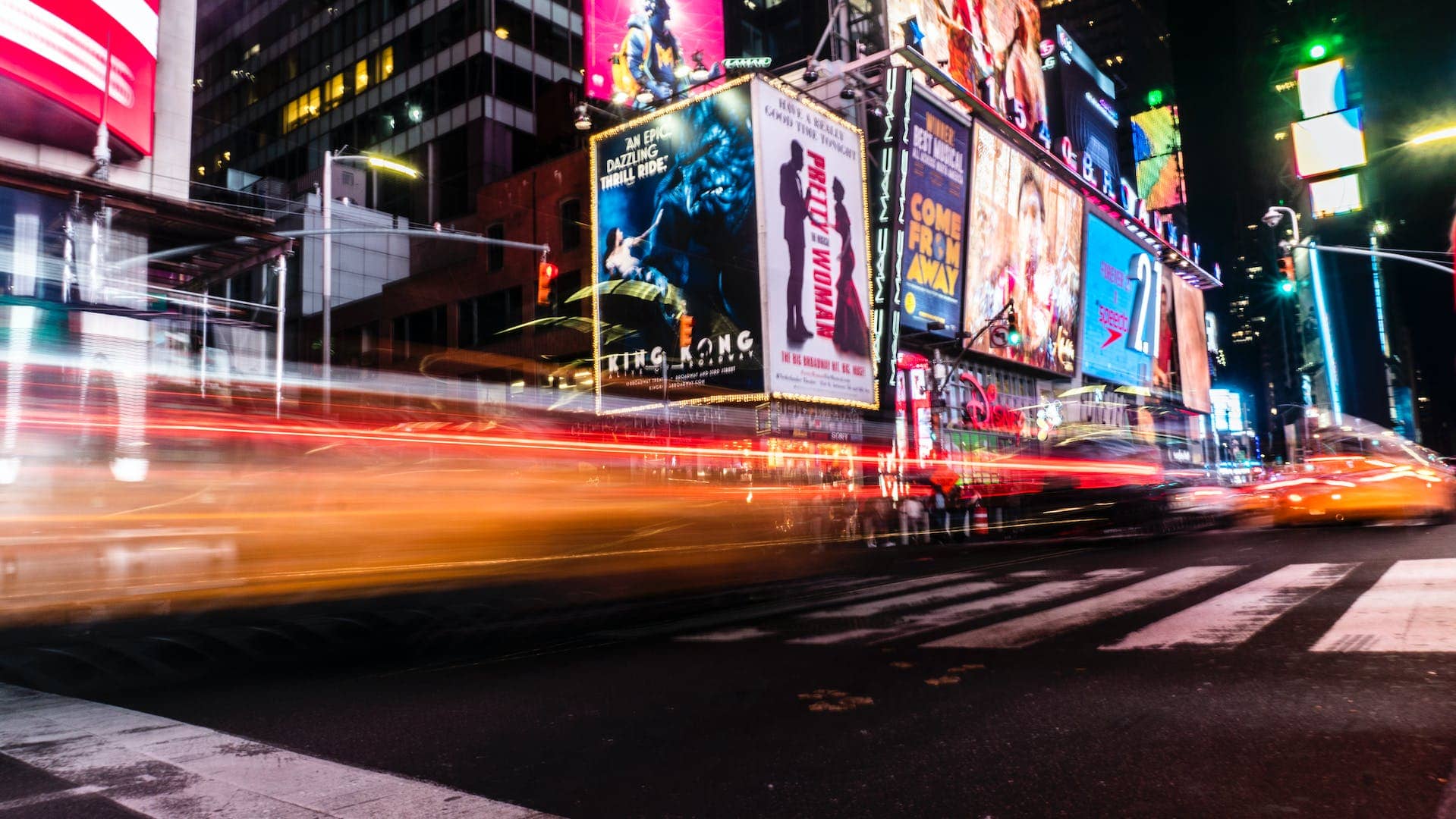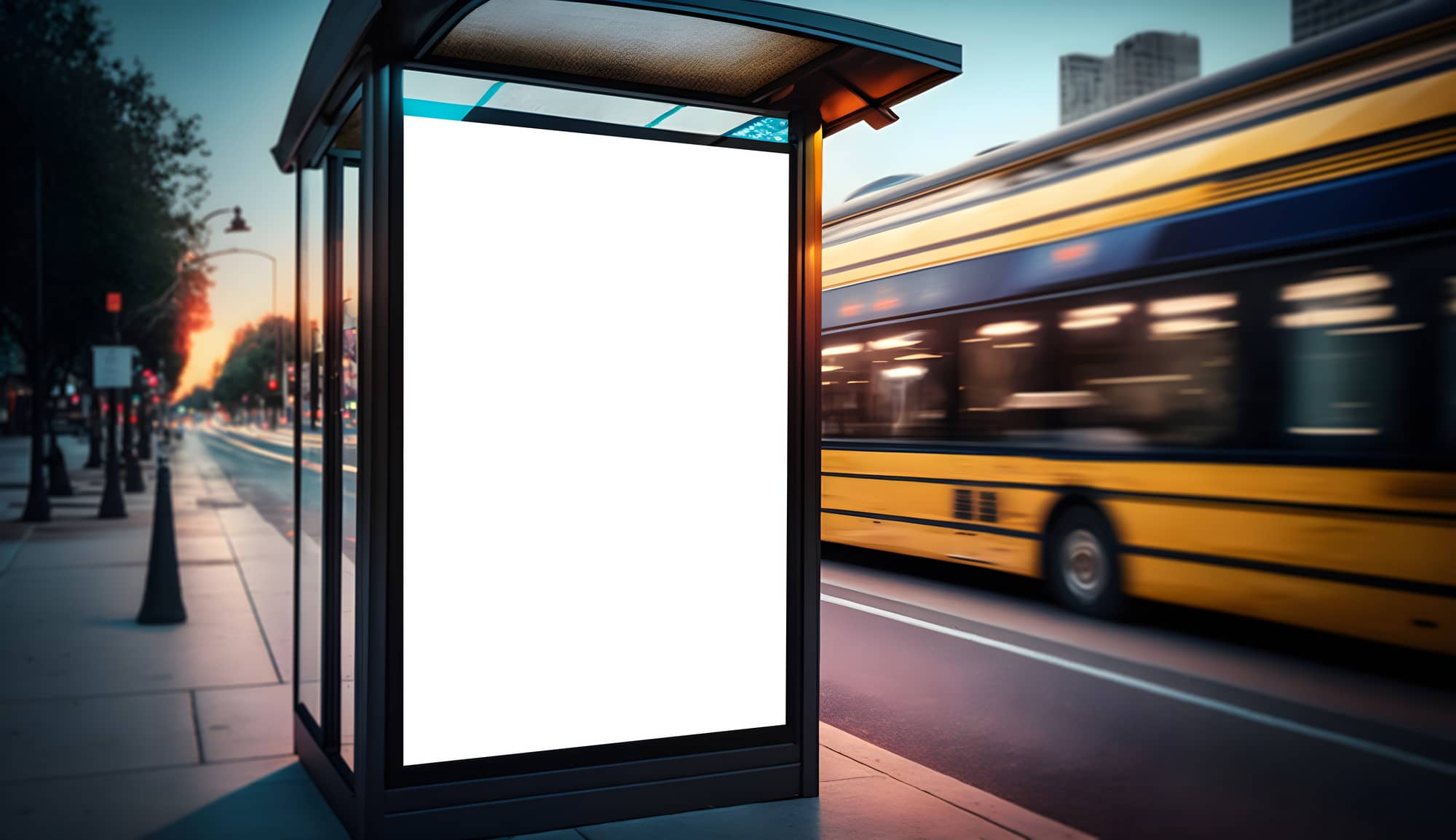How AI Is Set to Revolutionize Out-Of-Home Advertising
Out-of-home advertising (OOH) has been around for centuries, from painted signs on buildings to billboards on highways. But with the rise of artificial intelligence (AI), OOH advertising is set to undergo a revolution. AI is transforming the way advertisers understand their customers and the effectiveness of their campaigns.
One of the ways AI is revolutionizing OOH advertising is through its ability to gather real-time data. By leveraging AI, advertisers can gather information on weather conditions, location, and other data points that can help them create more effective campaigns. AI-powered travel pattern analysis is also being used to better understand customers’ usual routes, presenting a massive opportunity for small businesses.
Another way AI is set to revolutionize OOH advertising is through programmatic buying. This allows advertisers to purchase ad space in real-time, based on data such as audience demographics and behavior. The result is more effective and targeted campaigns, with the ability to adjust in real-time based on performance data.
As AI continues to evolve, the possibilities for OOH advertising are endless.
Chapters
Understanding AI and Out-Of-Home Advertising

Artificial Intelligence (AI) has been making waves in the advertising industry, and Out-Of-Home (OOH) advertising is no exception. OOH advertising refers to any form of advertising that reaches consumers while they are outside of their homes, such as billboards, transit ads, and street furniture.
AI has the potential to revolutionize OOH advertising by providing more targeted and personalized ads to consumers. This is because AI has the ability to analyze vast amounts of data and use that data to make predictions about consumer behavior. By using this data, advertisers can create more effective ads that are tailored to specific audiences.
One way that AI is being used in OOH advertising is through audience targeting. Advertisers can use AI to analyze data on consumer demographics, behavior, and location to determine the most effective placement for their ads. This allows advertisers to target specific audiences with relevant messages, increasing the likelihood that their ads will be seen and acted upon.
Another way that AI is being used in OOH advertising is through dynamic creative optimization. This involves using AI to create ads that are personalized to individual consumers based on their location, behavior, and other data. By creating more personalized ads, advertisers can increase the effectiveness of their campaigns and improve ROI.
The Evolution of Out-Of-Home Advertising
Out-of-home (OOH) advertising has been around for centuries. From ancient Egyptian hieroglyphics to the modern-day exterior display boards, OOH advertising has come a long way. The traditional OOH advertising mediums include posters, billboards, and static screens. These mediums have been used for decades to promote products, services, and events.
Billboards are one of the most popular forms of OOH advertising. They are large outdoor advertising structures that are placed in high-traffic areas to attract maximum attention. Billboards have been around since the early 19th century and have evolved significantly over time. Today, billboards are digital and interactive, providing a more engaging experience for the viewers.
Posters are another traditional form of OOH advertising. They are printed on paper or vinyl and are usually placed in public places such as bus stops, train stations, and malls. Posters are a cost-effective way to reach a large audience and are still widely used today.
Digital screens are the latest addition to the OOH advertising world. They are dynamic and interactive, providing a more engaging experience for the viewers. Digital screens can be found in various locations such as airports, malls, and train stations. They are highly effective in capturing the attention of the viewers due to their vibrant colors and high-resolution displays.
Static billboards are still widely used in many parts of the world. They are large, non-digital billboards that are usually made of vinyl or paper. Static billboards are cost-effective and can be easily customized to suit the needs of the advertisers.
Role of AI in Personalizing Out-Of-Home Advertising

Out-of-home advertising is one of the oldest forms of advertising, but it is still a powerful tool for marketers to reach their target audience. With the advent of AI and machine learning, out-of-home advertising is set to become even more effective. AI can help marketers to personalize their advertising messages and target the right audience at the right time. Here are some ways AI is set to revolutionize out-of-home advertising:
Targeting and Personalization
AI can help marketers to target their advertising messages to specific groups of people based on their interests, demographic information, and other factors. This can help to make advertising more relevant and engaging for consumers. AI can also help to personalize advertising messages based on the individual’s preferences and behaviors.
Engagement and Creativity
AI can help marketers to create more engaging and creative advertising messages. By analyzing data on consumer behavior and preferences, AI can help to identify the most effective messaging and creative elements for a particular campaign. This can help to increase engagement and drive better results.
Data and Analytics
AI can help marketers to gain valuable insights into consumer behavior and preferences. By analyzing big data sets, AI can identify patterns and trends that can help marketers to make more informed decisions about their advertising campaigns. This can help to improve the effectiveness of out-of-home advertising and drive better results.
Location Intelligence and Mobile Billboards
AI can help to optimize the placement of out-of-home advertising by analyzing location data and other factors. This can help to ensure that advertising messages are placed in the most effective locations and at the most effective times. AI can also help to optimize mobile billboard campaigns by analyzing data on consumer behavior and preferences.
Measuring the Impact of AI on OOH Advertising
Return on Investment
One of the most critical aspects of any advertising campaign is measuring the return on investment (ROI). With AI, OOH advertisers can track and analyze their campaigns’ performance in real-time, enabling them to make data-driven decisions to optimize their ad spend. AI-powered analytics tools can help advertisers identify which campaigns are delivering the highest ROI and which ones need improvement.
Conversions and Measurement
AI can also help OOH advertisers measure conversions and other key metrics. For example, AI-powered facial recognition technology can track how many people looked at an ad, how long they looked at it, and whether they engaged with it. This data can help advertisers understand how effective their ads are at driving conversions and other desired outcomes.
Global Market Insights
AI-powered analytics can also provide valuable insights into the global OOH advertising market. By analyzing data from multiple sources, including social media, weather data, and location data, AI can help OOH advertisers identify new opportunities for growth and expansion. For example, AI can help advertisers identify which locations are most likely to generate high levels of foot traffic, enabling them to target their campaigns more effectively.
Final Words on AI and OOH Advertising
As seen from the above discussion, AI is set to revolutionize out-of-home advertising. By leveraging AI, brands can gather a wealth of data in real-time, including weather conditions, travel patterns, and consumer behavior, to create more effective OOH campaigns.
AI-powered advertising is transforming the advertising industry at a rapid pace. Consumers are seeing these changes in the personalized ads on their web browsers, the chatbots that help them make buying decisions. AI has the potential to transform the way businesses approach marketing and sales. One of the biggest benefits of AI in marketing and sales is lead generation and customer engagement.
The use of data and AI is transforming advertising in many industries, including out-of-home advertising. As the data changes, advertising companies use AI-powered travel pattern analysis to better understand customers’ usual routes. This presents a massive opportunity for small businesses to create more effective OOH campaigns.
In conclusion, AI is set to revolutionize out-of-home advertising by providing a wealth of data that can be used to create more effective campaigns. AI-powered advertising is transforming the advertising industry at a rapid pace, and businesses that embrace this technology will be better positioned to succeed in the future.
FAQ
What is Out-Of-Home (OOH) advertising, and how does it differ from other forms of advertising?
Out-Of-Home (OOH) advertising refers to any advertising media that reaches consumers while they are outside their homes, such as billboards, transit ads, and street furniture. It differs from other forms of advertising by targeting audiences in public spaces rather than within the confines of their homes or digital devices.
What are the advantages of Out-Of-Home advertising for brands and advertisers?
The advantages of Out-Of-Home advertising for brands and advertisers include high visibility and exposure, broad audience reach, 24/7 visibility, geographic targeting opportunities, and the ability to complement other advertising channels for integrated marketing campaigns.
How does Out-Of-Home advertising leverage location-based targeting to reach specific audiences?
Out-Of-Home advertising leverages location-based targeting by strategically placing ads in high-traffic areas, transportation hubs, or specific neighborhoods where the target audience is likely to be present, maximizing the relevance and impact of the message.
What role does creativity play in effective Out-Of-Home advertising campaigns?
Creativity plays a crucial role in effective Out-Of-Home advertising campaigns by capturing attention, creating memorable brand experiences, and driving engagement with the audience in a short timeframe and in often crowded environments.
How can digital technology enhance Out-Of-Home advertising strategies?
Digital technology can enhance Out-Of-Home advertising strategies by enabling dynamic content updates, real-time audience targeting, interactive experiences, and measurement of campaign effectiveness through data analytics and insights.
What are some common formats of Out-Of-Home advertising?
Some common formats of Out-Of-Home advertising include billboards, digital screens, transit ads (such as bus and subway ads), street furniture (such as benches and kiosks), ambient advertising, and experiential installations.
How can Out-Of-Home advertising complement digital marketing efforts?
Out-Of-Home advertising can complement digital marketing efforts by extending brand visibility beyond online channels, reinforcing messaging across multiple touchpoints, and driving offline-to-online consumer actions through QR codes, NFC tags, or social media integrations.
What factors should be considered when planning an Out-Of-Home advertising campaign?
Factors to consider when planning an Out-Of-Home advertising campaign include audience demographics and behavior, location selection, creative messaging and design, budget allocation, campaign duration, and measurement metrics for tracking performance and ROI.
What are some innovative examples of Out-Of-Home advertising campaigns?
Innovative examples of Out-Of-Home advertising campaigns include augmented reality experiences, interactive billboards, guerrilla marketing stunts, 3D installations, and location-based mobile activations that captivate audiences and generate buzz.
How can Out-Of-Home advertising contribute to brand awareness, consideration, and conversion in the consumer journey?
Out-Of-Home advertising can contribute to brand awareness by increasing visibility and exposure, to consideration by delivering impactful messaging at key touchpoints, and to conversion by prompting action or driving foot traffic to physical locations, ultimately influencing consumer behavior throughout the purchase journey.
What role does Out-Of-Home advertising play in reaching audiences that are difficult to target through other channels?
Out-Of-Home advertising plays a significant role in reaching audiences that are difficult to target through other channels, such as commuters, pedestrians, and tourists, who may not be exposed to traditional media or online advertising.
How can Out-Of-Home advertising campaigns be tailored to specific demographics or consumer behaviors?
Out-Of-Home advertising campaigns can be tailored to specific demographics or consumer behaviors by selecting strategic locations frequented by the target audience, incorporating relevant messaging and creative elements, and leveraging data insights to optimize targeting strategies.
What are some metrics used to measure the effectiveness of Out-Of-Home advertising campaigns?
Metrics used to measure the effectiveness of Out-Of-Home advertising campaigns include reach and frequency, impressions, traffic counts, dwell time, brand recall, customer engagement, and attribution models linking OOH exposure to desired outcomes.
How does Out-Of-Home advertising contribute to local marketing efforts for businesses targeting specific geographic areas?
Out-Of-Home advertising contributes to local marketing efforts by providing visibility within specific neighborhoods or regions, increasing foot traffic to local businesses, and fostering community connections through targeted messaging and promotions.
What role does Out-Of-Home advertising play in creating brand awareness for new product launches or promotions?
Out-Of-Home advertising plays a vital role in creating brand awareness for new product launches or promotions by generating buzz, capturing attention in high-traffic areas, and reaching a broad audience with impactful messaging and visuals.
How can Out-Of-Home advertising be used to reinforce brand messaging and storytelling across multiple touchpoints?
Out-Of-Home advertising can be used to reinforce brand messaging and storytelling by integrating consistent themes, visuals, and taglines across OOH formats, digital channels, social media, and experiential activations, creating a cohesive brand narrative.
What are some emerging trends in Out-Of-Home advertising, particularly in the context of technological advancements?
Emerging trends in Out-Of-Home advertising include the adoption of digital screens and programmatic buying, the use of location-based data for targeting and personalization, interactive experiences using augmented reality or QR codes, and integration with mobile and social media platforms.
How can Out-Of-Home advertising be used to create memorable experiences or evoke emotional responses from audiences?
Out-Of-Home advertising can create memorable experiences or evoke emotional responses by leveraging creative storytelling, immersive installations, experiential activations, and interactive elements that engage the senses and leave a lasting impression on viewers.
What considerations should be made for Out-Of-Home advertising during seasonal or cultural events?
Considerations for Out-Of-Home advertising during seasonal or cultural events include aligning messaging with relevant themes or holidays, capitalizing on increased foot traffic or tourism, and adapting creative executions to resonate with the local context or cultural sensitivities.
How can Out-Of-Home advertising be integrated into broader marketing strategies for maximum impact and effectiveness?
Out-Of-Home advertising can be integrated into broader marketing strategies by aligning messaging and creative assets with other advertising channels, leveraging cross-promotional opportunities, and using data-driven insights to optimize media planning and budget allocation for integrated campaigns.
Author bio

Callie is a seasoned marketing specialist with an emphasis on new and trending marketing technology. Through her decade long marketing experience at multiple renowned advertising firms, and her love for marketing research and data, she distills insights, advice, and ideas in her detailed pieces.
Master the Art of Video Marketing
AI-Powered Tools to Ideate, Optimize, and Amplify!
- Spark Creativity: Unleash the most effective video ideas, scripts, and engaging hooks with our AI Generators.
- Optimize Instantly: Elevate your YouTube presence by optimizing video Titles, Descriptions, and Tags in seconds.
- Amplify Your Reach: Effortlessly craft social media, email, and ad copy to maximize your video’s impact.